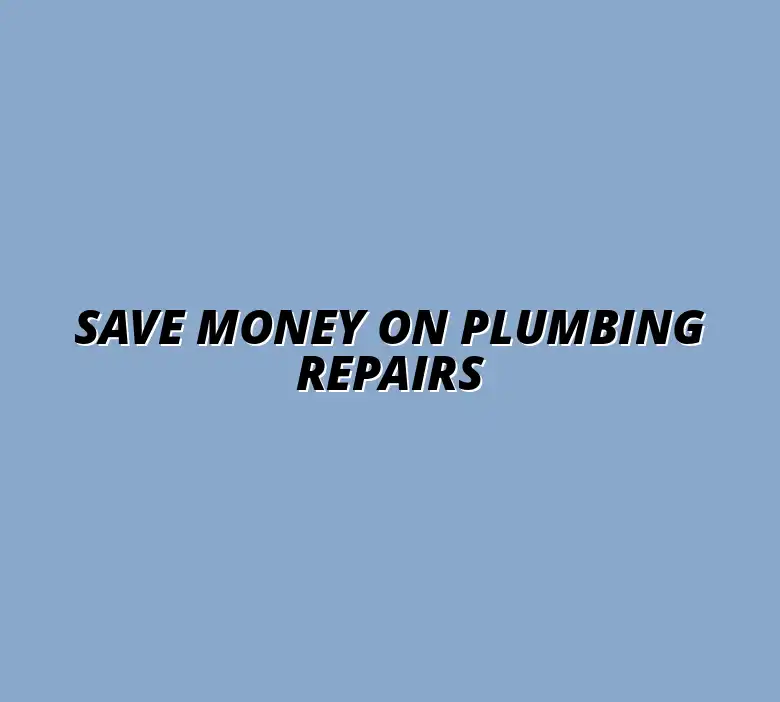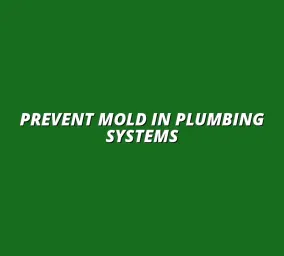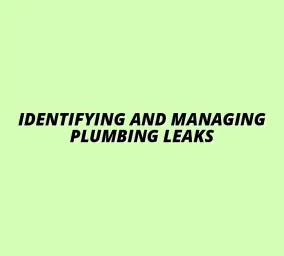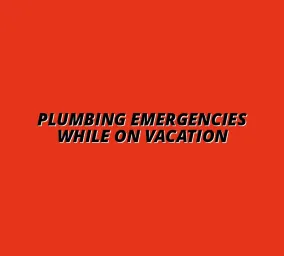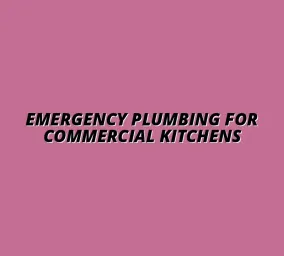Save Money on Plumbing Repairs
Understanding the Importance of Preventative Plumbing Measures
When it comes to home care, many homeowners often overlook the significance of preventative plumbing measures. Investing time and resources into maintaining your plumbing system can save you from experiencing significant problems down the road. In fact, just like regular check-ups at the doctor, your plumbing needs attention to ensure it remains in good shape! Regular annual plumbing inspections are a great place to start.
Understanding the financial impact of neglecting plumbing maintenance is crucial. Plumbing issues, when left unattended, can lead to costly repairs, extensive water damage, and even affect your home’s value. Therefore, fostering a proactive approach towards plumbing maintenance can pay off in more ways than one.
The Financial Impact of Plumbing Repairs
Homeowners often underestimate how expensive plumbing repairs can be. According to recent studies, the average cost of a plumbing emergency can range from hundreds to thousands of dollars! This includes not just the repair work but also damages caused by leaks, clogs, or pipe breaks. Learning to recognize urgent plumbing emergency warning signs can help mitigate these costs.
Here are some statistics on plumbing costs that might surprise you:
- Emergency plumbing calls can cost between $50 to $150 per hour.
- Water damage from leaks can lead to an average expense of $2,500 in repairs.
- Replacing a water heater typically costs between $800 and $1,600.
Common Causes of Expensive Repairs
Many plumbing issues arise from common problems that can easily be prevented. Understanding these causes can help you avoid costly repairs in the future. For example, preventing grease buildup in pipes is crucial. Check out these helpful tips on preventing grease buildup in pipes to avoid costly clogs.
- Clogged drains from hair, grease, and debris.
- Pipes bursting due to freezing temperatures.
- Old plumbing systems that need replacement.
By tackling these issues early on, you can save yourself a lot of money and stress. Regular inspections can catch these problems before they escalate into major headaches.
Benefits of Preventative Plumbing Maintenance
Investing in preventative plumbing maintenance brings a multitude of benefits that extend beyond just saving money. A well-maintained plumbing system enhances your home's overall safety and comfort. Here's how!
Over time, the cost savings from routine maintenance can be substantial. Regular check-ups can help you spot minor issues before they become major expenses, keeping your plumbing system in good condition. This proactive approach not only saves cash but also extends the life of your plumbing fixtures. Regularly flushing your water heater, as described in this helpful guide, is a simple yet effective way to extend its lifespan.
Cost Savings Over Time
Preventative plumbing care can lead to significant cost savings. Consider these points:
- Regular maintenance can reduce the risk of emergency repairs.
- Early detection of leaks can save on your water bill.
- Reliable plumbing increases the lifespan of your fixtures.
All of these factors contribute to a healthier home environment and less stress for you as a homeowner!
Increased Home Value and Safety
Another key benefit of maintaining your plumbing system is its impact on your home’s value. A well-functioning plumbing system can enhance your property’s marketability, making it more attractive to buyers. Furthermore, proper maintenance ensures your home remains a safe environment. Investing in a water softener can significantly help prevent plumbing issues.
Here are some ways preventative plumbing measures contribute to both value and safety:
- Reduces the risk of water damage, which can lead to mold growth.
- Improves indoor air quality by preventing leaks and humidity issues.
- Ensures all plumbing fixtures are up to code, avoiding legal issues.
In conclusion, understanding the importance of preventative plumbing measures is essential for any homeowner. They save money, improve safety, and enhance your home’s value. So, let’s dive deeper into common preventative measures to maintain your plumbing system!
Responding to Common Plumbing Concerns
As a homeowner, you might have a lot of questions regarding your plumbing system. It's essential to be informed and prepared for any plumbing issues that might arise. By addressing common concerns and misconceptions, you can take proactive steps to maintain your plumbing effectively.
One major area where homeowners often seek clarity is in understanding preventative plumbing measures. Knowing the answers to frequently asked questions can empower you to act swiftly and prevent small issues from escalating into costly repairs.
FAQs About Preventative Plumbing Measures
One question I often hear is, *“How often should I schedule plumbing inspections?”* Ideally, you should have an inspection at least once a year. This helps identify any potential problems before they become major issues, saving you time and money.
Another common query is, *“What are the early signs of plumbing issues?”* Recognizing these signs early can prevent future headaches. Keep an eye out for:
- Unusual sounds coming from pipes
- Unexplained water bills
- Water stains on walls or ceilings
- Low water pressure
Addressing Homeowner Misconceptions
Many homeowners believe that they can handle all plumbing repairs themselves. However, *myths about DIY plumbing repairs* can lead to more significant issues down the line. While minor fixes can sometimes be tackled, it’s essential to know your limits and when to call a professional. For example, attempting to fix a stuck bathroom drain plug yourself can sometimes lead to more problems. This guide on fixing a stuck bathroom drain plug offers some helpful insight.
Another misconception involves plumbing insurance and warranties. Many think that having these covers all plumbing issues. The truth is, not all plumbing problems are covered, so it’s crucial to read the fine print and understand what your policy entails.
Implementing a Long-Term Plumbing Maintenance Strategy
A solid plumbing maintenance plan is vital for keeping your home’s plumbing in good shape. By creating a strategy that includes regular inspections and maintenance, you can prevent unexpected issues. Here’s how to implement an effective long-term plumbing maintenance approach.
Establishing a routine for plumbing maintenance is one of the best ways to protect your home. This should be built around essential tasks that help ensure everything runs smoothly for years to come.
Creating a Plumbing Maintenance Checklist
A plumbing maintenance checklist is a practical tool that homeowners can use. Here are some essential tasks to include:
- Flush your water heater annually
- Check for leaks under sinks and around toilets
- Inspect hoses and fixtures for wear
- Test the operation of sump pumps
In addition to these tasks, scheduling regular professional help is a key part of this strategy. A plumber can identify problems you might not see and can provide guidance on maintaining your system. For plumbing services in Billesley, Birmingham, consider contacting a local professional like this plumber.
Staying Informed About New Technologies
Plumbing technology is constantly evolving, so staying informed is beneficial. One exciting development is the rise of *smart home plumbing solutions*. These can help you monitor your plumbing remotely and alert you to potential issues before they escalate.
Additionally, emerging trends in plumbing maintenance can offer cost-effective solutions. Innovations like low-flow fixtures and advanced filtration systems not only improve water quality but can also save you money on utility bills.
Final Thoughts on Cost-Effective Plumbing Care
Taking control of your plumbing maintenance can lead to significant benefits. By encouraging proactive measures, you can avoid costly repairs and ensure your home’s plumbing system functions optimally.
Building a relationship with your plumber is another crucial step. It’s not just about fixing problems; a good plumber can offer invaluable advice on maintaining your system and upgrading fixtures.
Call to Action for Homeowners
Don’t wait for a plumbing disaster to strike! *Take control of your plumbing maintenance today*. Start by creating your checklist and scheduling that inspection.
For more information and resources for further learning and assistance, consider checking local plumbing websites or community forums. It’s never too late to become proactive about your home’s plumbing care!

